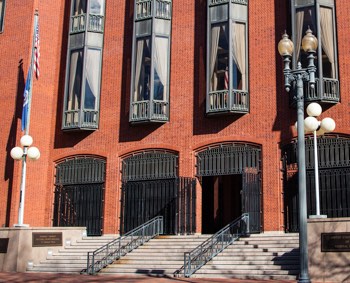 Warsaw Orthopedic, Inc. v. NuVasive, Inc. (Fed. Cir. June 3, 2016) (Before Lourie, Dyk, and Reyna, J.) (Opinion for the court, Dyk, J.) Click Here for a copy of the opinion.
Warsaw Orthopedic, Inc. v. NuVasive, Inc. (Fed. Cir. June 3, 2016) (Before Lourie, Dyk, and Reyna, J.) (Opinion for the court, Dyk, J.) Click Here for a copy of the opinion.
The Federal Circuit reaffirmed a district court judgment against Warsaw Orthopedic and Medtronic Sofamor Danek USA (collectively, “Warsaw”) for infringing NuVasive’s patent on a method for detecting and measuring the distance to nerves during surgical procedures. The Federal Circuit previously affirmed the district court before the Supreme Court decided Commil USA, LLC v. Cisco Systems. In that case, the Supreme Court held that induced infringement requires the defendant to know of or be willfully blind to (a) the existence of the infringed patent, and (b) that the acts the defendant induced were infringing. Further, a defendant may avoid a finding of induced infringement if it relied on a reasonable, but incorrect, non-infringement theory.
In light of Commil, Warsaw petitioned for certiorari, but requested that the Supreme Court vacate the judgment and remand for further consideration by the Federal Circuit. Warsaw argued that NuVasive did not present sufficient evidence for a reasonable jury to conclude that Warsaw had the knowledge required to induce infringement. The Supreme Court granted certiorari, vacated the judgment, and remanded the case to the Federal Circuit.
On remand, the Court reconsidered whether NuVasive presented sufficient evidence for a reasonable jury to conclude that Warsaw knew they were instructing doctors to infringe NuVasive’s patent. The Court found that there was sufficient evidence for a reasonable jury to find that Warsaw knew or was willfully blind to its inducement of doctors to infringe NuVasive’s claims.
[Troutman-Ad]
First, the Court concluded that Warsaw’s non-infringement theory was objectively unreasonable. NuVasive’s patented method stimulated nerves using electrical pulses called “stimulus signals.” The parties agreed that a “stimulus signal” is a signal able to elicit a nerve response. The relevant claim limitation required that once the “stimulus signal” pulses reached a strength that elicited a nerve response, the device stopped emitting those stimulus signals. However, on remand, Warsaw argued that the “stopping” limitation required the device to stop emitting any and all electrical stimulus pulses once a nerve response was elicited, not just the stimulus signal. The Court held that this was an improper request for revision of the prior claim construction, and found it inconsistent with the prosecution history of NuVasive’s patent, which demonstrated that the “stopping” referred specifically to the stoppage of the stimulus signals.
Second, the Court concluded that NuVasive had presented sufficient evidence such that a jury could conclude that Warsaw knew it was inducing doctors to infringe NuVasive’s patent. Warsaw’s knowledge of NuVasive’s patent was “undisputed,” and when operational, Warsaw’s infringing device stopped emitting the stimulus signal after a nerve response was detected, just as NuVasive’s patent required. The jury heard this evidence, and thus could have reasonably concluded that Warsaw had the requisite knowledge to show induced infringement. This knowledge, along with the conclusion that Warsaw’s non-infringement position was objectively unreasonable, was sufficient to show that Warsaw knew or was willfully blind to its inducement of doctors to use the Warsaw device to infringe NuVasive’s claims.
In a concurrence, Judge Reyna expressed several concerns about the court’s reasoning in reaching this conclusion. First, assessing the reasonableness of a defendant’s non-infringement position by evaluating a claim construction that was neither raised by the defendant nor put before the jury was improper. Instead, the court should have resolved the case by affirming the jury’s finding based solely on Warsaw’s agreement that the “stopping” limitation had its plain and ordinary meaning. The Court need only hold Warsaw to its agreed construction, rather than speculate on whether a late claim construction was a reasonable non-infringement theory. The concurrence also noted that the jury was not instructed that the defendant could be found to lack the intent to induce infringement if they incorrectly, but reasonably, construed a claim as to believe that they were not infringing. Therefore, the jury never necessarily decided that Warsaw’s claim construction was unreasonable, as the majority asserts. Finally, the majority’s analysis incorrectly suggests that a finding of direct infringement is sufficient for a plaintiff to establish that a defendant intended to induce infringement.
Parker Hancock and Puja Dave also contributed to this case summary.
[Troutman-About]

![[IPWatchdog Logo]](https://ipwatchdog.com/wp-content/themes/IPWatchdog%20-%202023/assets/images/temp/logo-small@2x.png)


![[Advertisement]](https://ipwatchdog.com/wp-content/uploads/2024/04/Patent-Litigation-Masters-2024-sidebar-early-bird-ends-Apr-21-last-chance-700x500-1.jpg)

![[Advertisement]](https://ipwatchdog.com/wp-content/uploads/2021/12/WEBINAR-336-x-280-px.png)
![[Advertisement]](https://ipwatchdog.com/wp-content/uploads/2021/12/2021-Patent-Practice-on-Demand-recorded-Feb-2021-336-x-280.jpg)
![[Advertisement]](https://ipwatchdog.com/wp-content/uploads/2021/12/Ad-4-The-Invent-Patent-System™.png)







Join the Discussion
No comments yet.